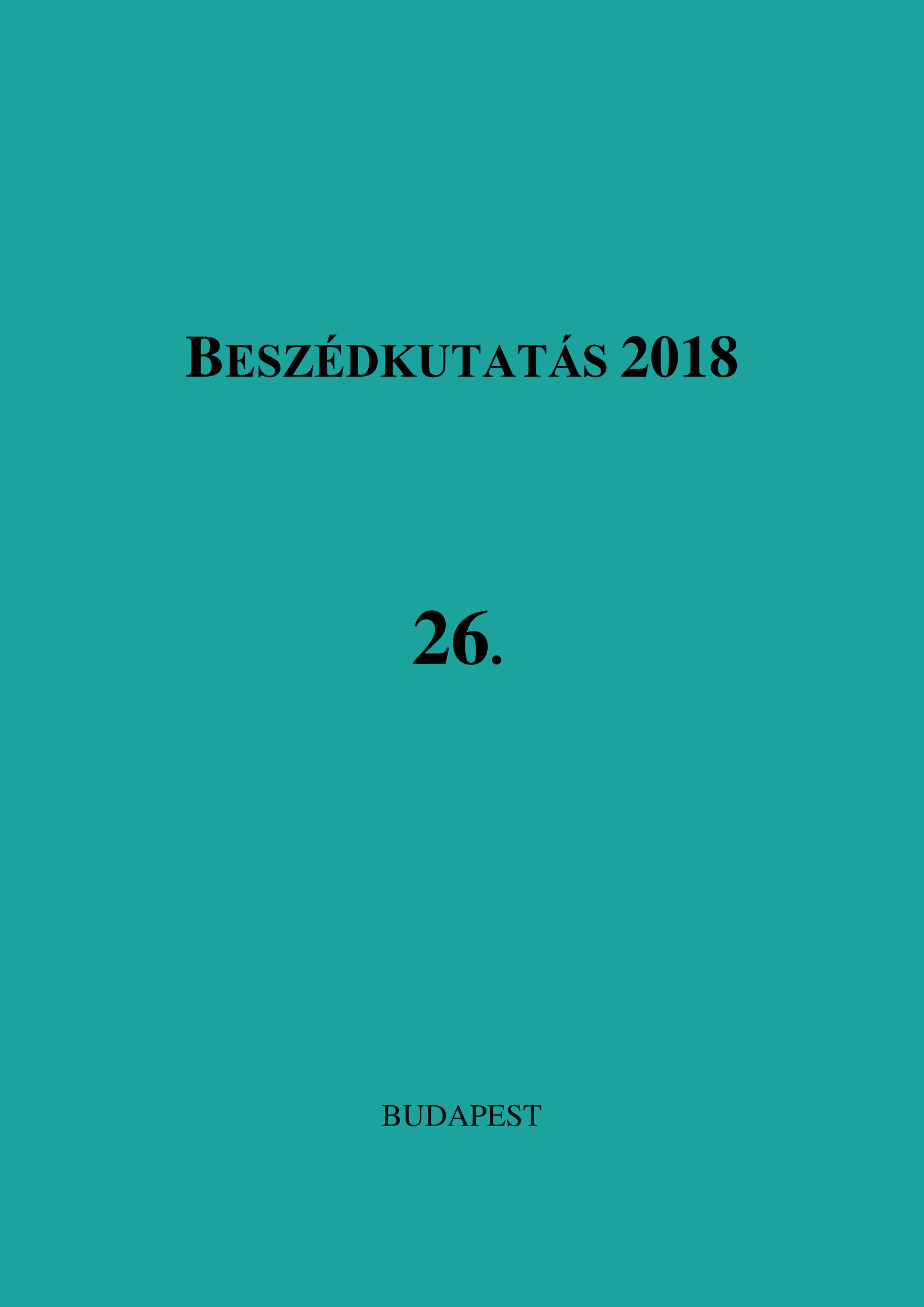A magyar /h/ zöngésedése magánhangzók között
Absztrakt
In our research we aim to examine this allophonic alternation of the laryngeal fricative from a phonetic point of view, in an attempt to shed more light on the phonetic and phonological factors that may facilitate or restrain the occurrence of [ɦ] in Hungarian, and thus to test previous claims of phonology and phonetics on this issue. As a first step, the present study investigated the effect of two vowel quality features, vowel openness and backness, and a phonological conditioner, pitch-accent on the ratio of voicing that occurs in intervocalic /h/ in laboratory speech. As a secondary aim we also tried to raise questions regarding the very specific type of voice quality this unique fricative exhibits, breathy voice. For this purpose, we also analyzed two more acoustic parameters, center of gravity and the harmonics- to-noise ratio, which are traditionally suggested to reliably and informatively quantify voice quality in fricatives. The results confirmed our hypothesis, that the intervocalic voicing of /h/ may be regarded as a purely phonetic process not governed or restrained by phonological processes, but only by the presence of the two flanking vowels. In a fine-grained phonetic analysis, however, we also showed that this phonetic process may be affected by the vocalic feature, openness of the flanking vowels, via coarticulation, and that front and back vowels may not be regarded as homogenous groups of vowels in the open – close dimension. We interpreted the latter results by taking into account a less simplified explanation of vowel articulation, and the complex interactions of the tongue and the larynx structures.
A Beszédkutatásba leadott tanulmányokat máshol változatlan formában megjelentetni nem lehet. Más személy a szerkesztőbizottság engedélyével és megfelelő hivatkozással használhat fel ábrákat a publikált tanulmányokból.





